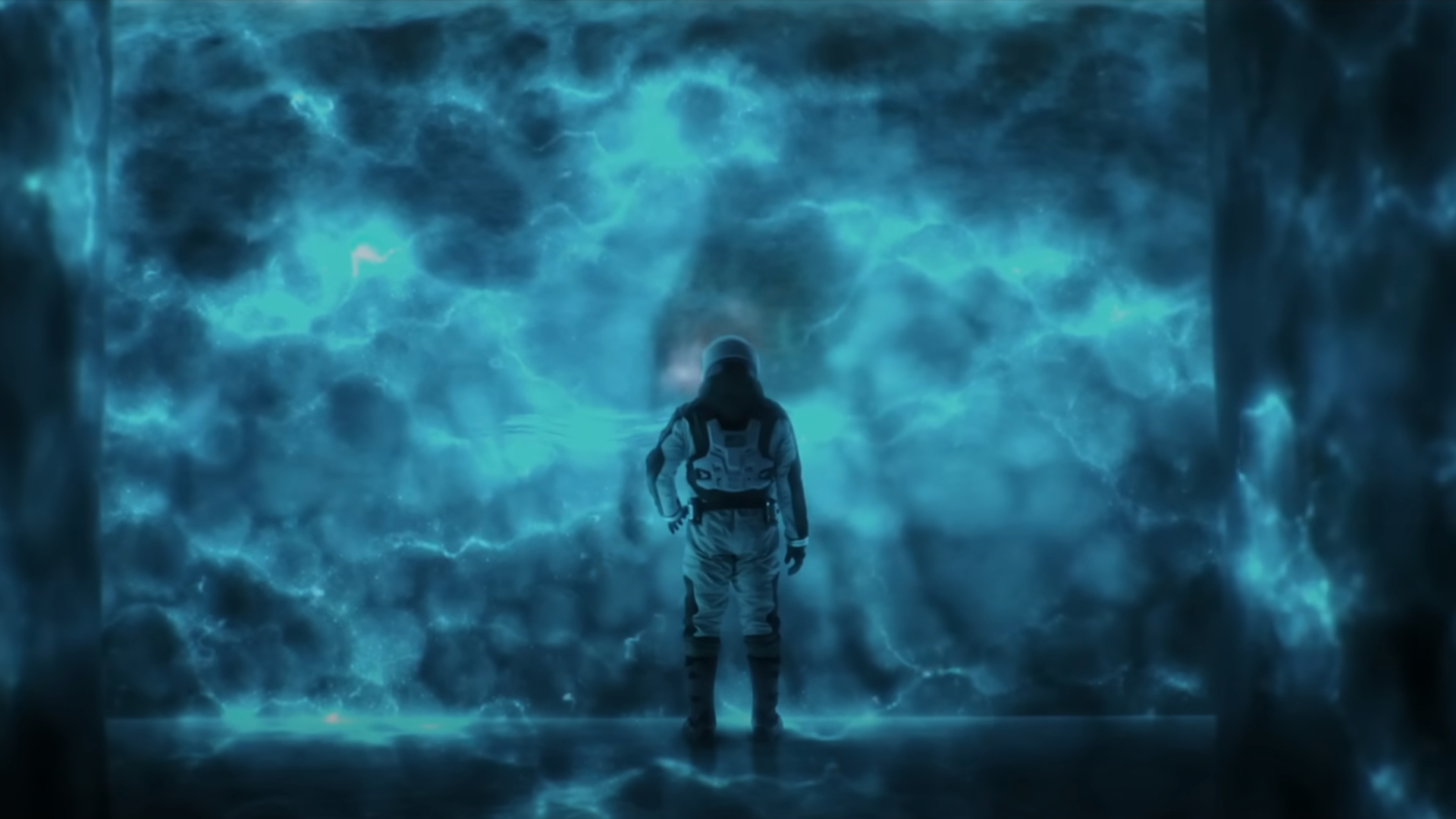Flowing Water on Mars: The Discovery in Pictures
Salty Water Streaks on Mars
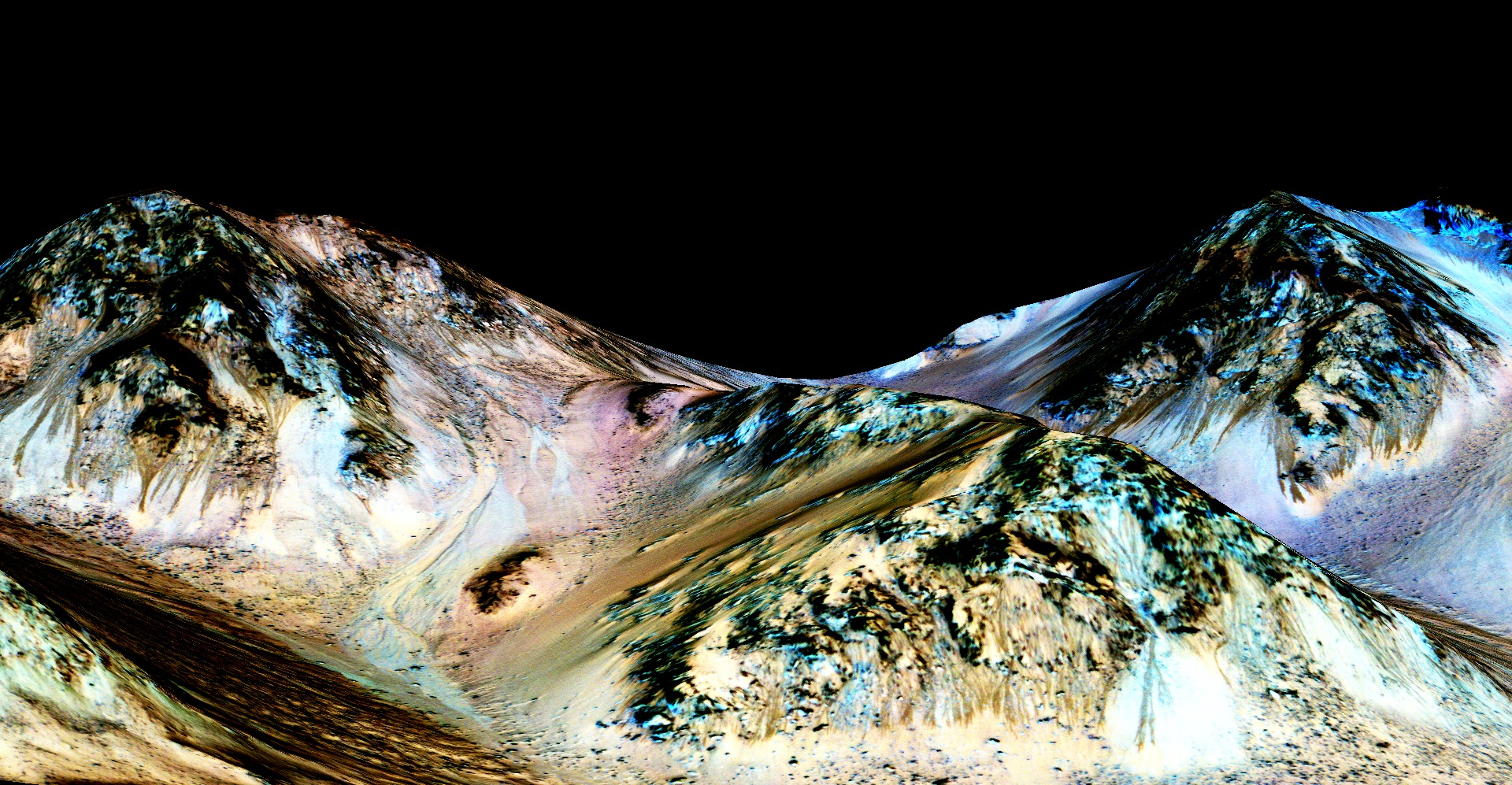
Planetary scientists have determined that recurring slope lineae flowing downhill on Mars formed by the action of contemporary liquid water. See the discovery in this gallery. HERE:These dark, narrow, 100 meter-long streaks (called recurring slope lineae) are flowing downhill on Mars, and are inferred to have been formed by contemporary flowing water. Recently, planetary scientists detected hydrated salts on these slopes at Hale crater, corroborating their original hypothesis that the streaks are indeed formed by liquid water. The blue color seen upslope of the dark streaks are thought not to be related to their formation, but instead are from the presence of the mineral pyroxene. [See full story.]
Slope Lineae at Garni Crater on Mars
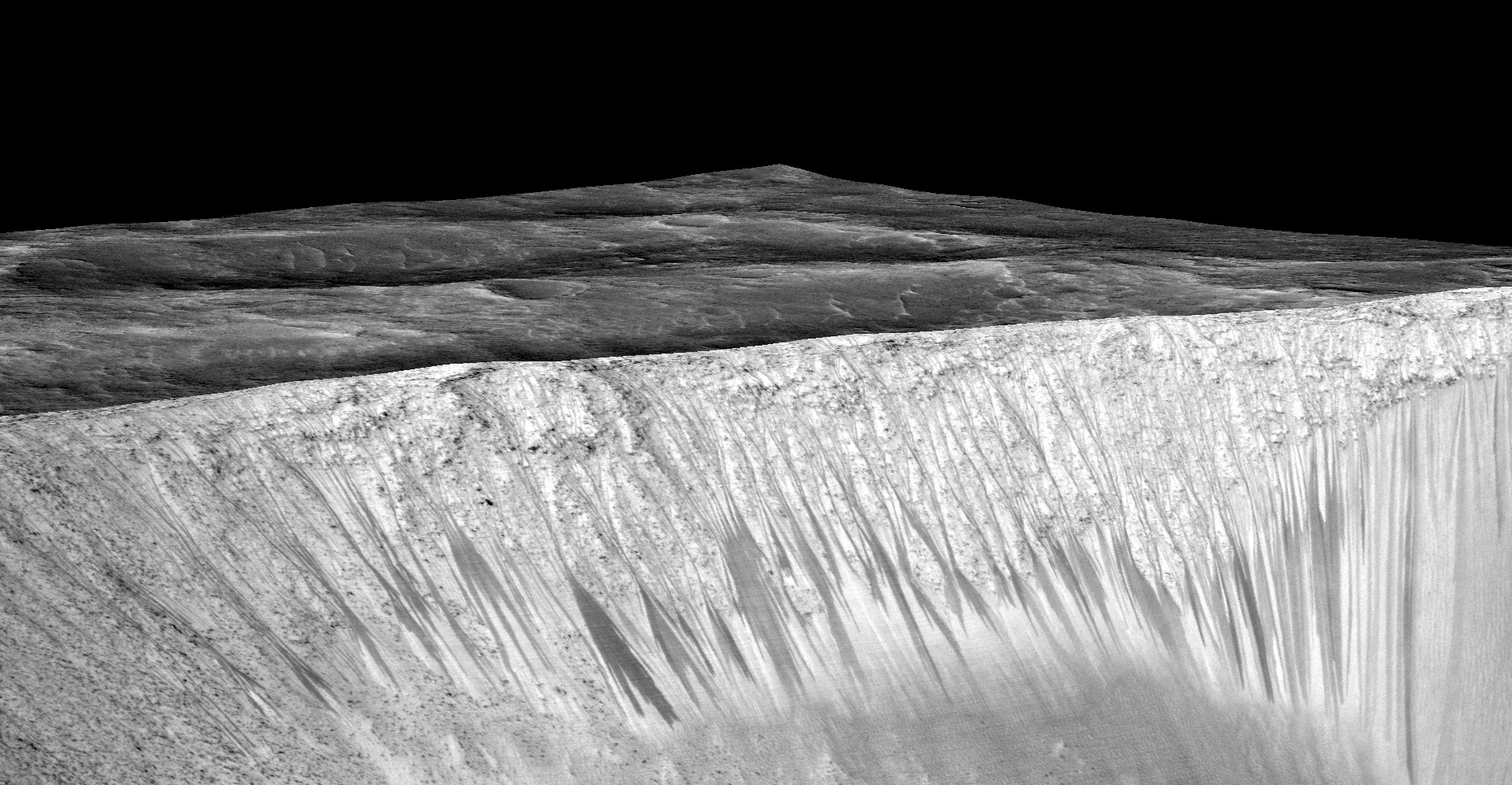
Dark narrow streaks called recurring slope lineae emanate from the walls of Garni crater on Mars. The dark streaks here stretch up to few hundred meters in length. Researchers hypothesize that they formed from the flow of briny liquid water on Mars. [See full story.]
Slope Lineae in Coprates Chasma on Mars

Dark narrow streaks called recurring slope lineae flow down the west facing slopes of Coprates Chasma in the equatorial region of Mars. Researchers have inferred that these dark streaks flowing downhill on warm Martian slopes formed from the action of contemporary flowing liquid water on Mars. Discovery of hydrated salts in these slopes corroborate the liquid water hypotheses. [See full story.]
Slope Lineae at Horowitz Crater on Mars #1
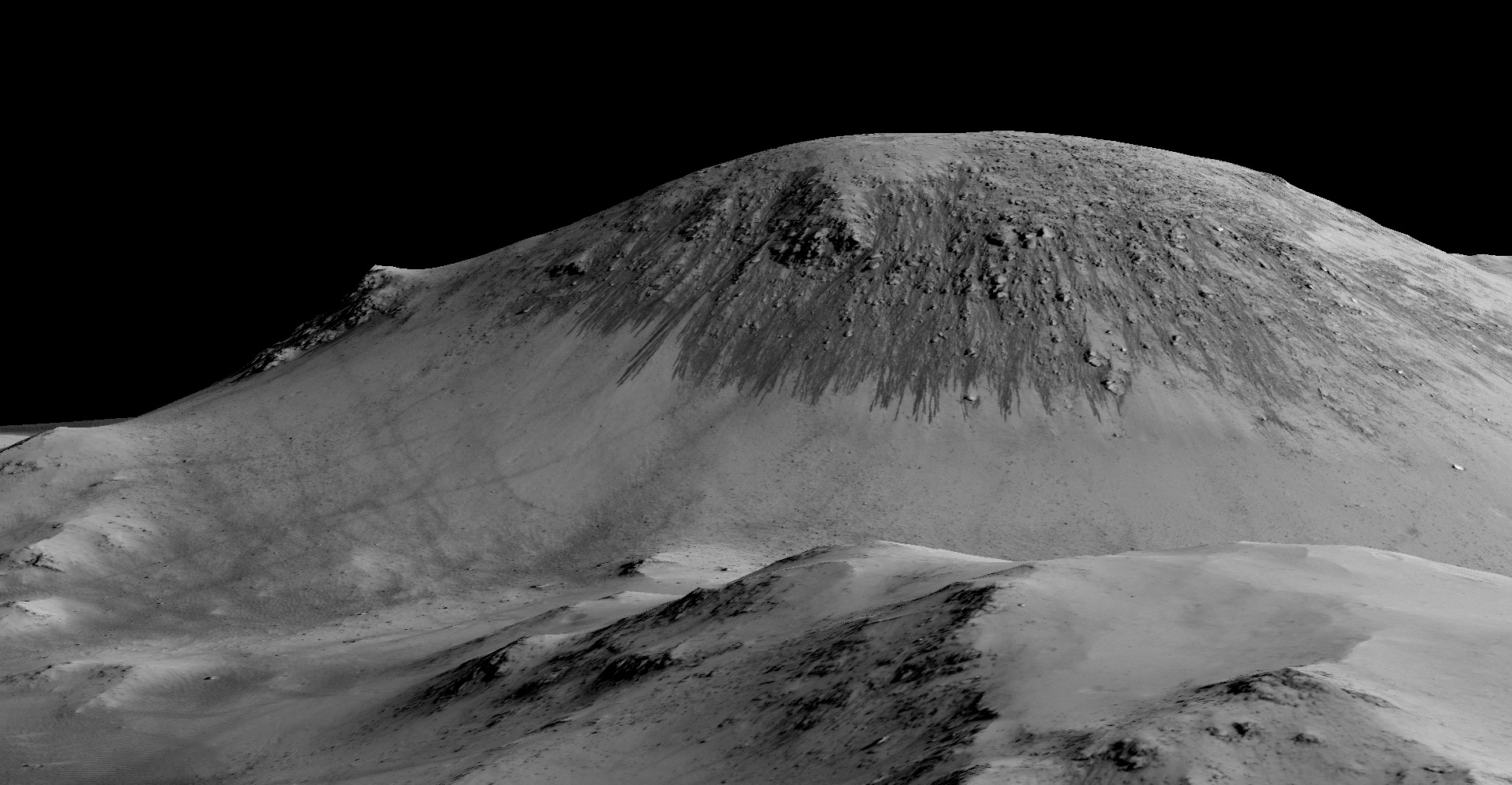
Researchers have inferred that these dark, narrow, 330 foot-long (100 m.) streaks called recurring slope lineae flowing downhill on Mars have formed by the action of contemporary flowing water. Recently, planetary scientists found hydrated salts on these slopes at Horowitz crater, corroborating the original hypothesis that the streaks form with liquid water. [See full story.]
Slope Lineae at Horowitz Crater on Mars #2

Researchers have inferred that these dark, narrow, 330 foot-long (100 m.) streaks called recurring slope lineae flowing downhill on Mars have formed by the action of contemporary flowing water. Recently, planetary scientists found hydrated salts on these slopes at Horowitz crater, corroborating the original hypothesis that the streaks form with liquid water. [See full story.]
Slope Lineae at Horowitz Crater on Mars #3
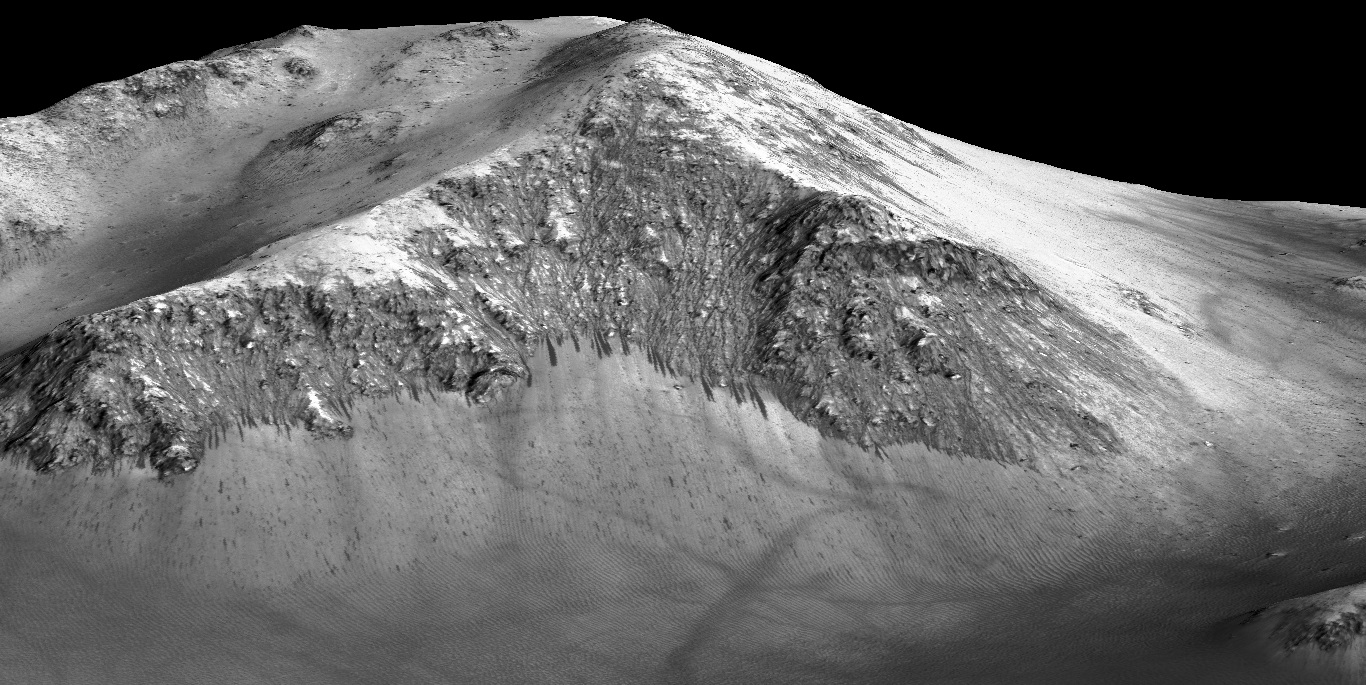
Researchers have inferred that these dark, narrow, 330 foot-long (100 m.) streaks called recurring slope lineae flowing downhill on Mars have formed by the action of contemporary flowing water. Recently, planetary scientists found hydrated salts on these slopes at Horowitz crater, corroborating the original hypothesis that the streaks form with liquid water. [See full story.]
Recurring Slope Lineae in Coprates Chasma

Recurring slope lineae (RSL), the dark flows seen here, occur abundantly along the steep slopes of ancient bedrock in Coprates Chasma on Mars. Image released Feb. 19, 2014.
Breaking space news, the latest updates on rocket launches, skywatching events and more!
Southeast Rim of Hale Crater
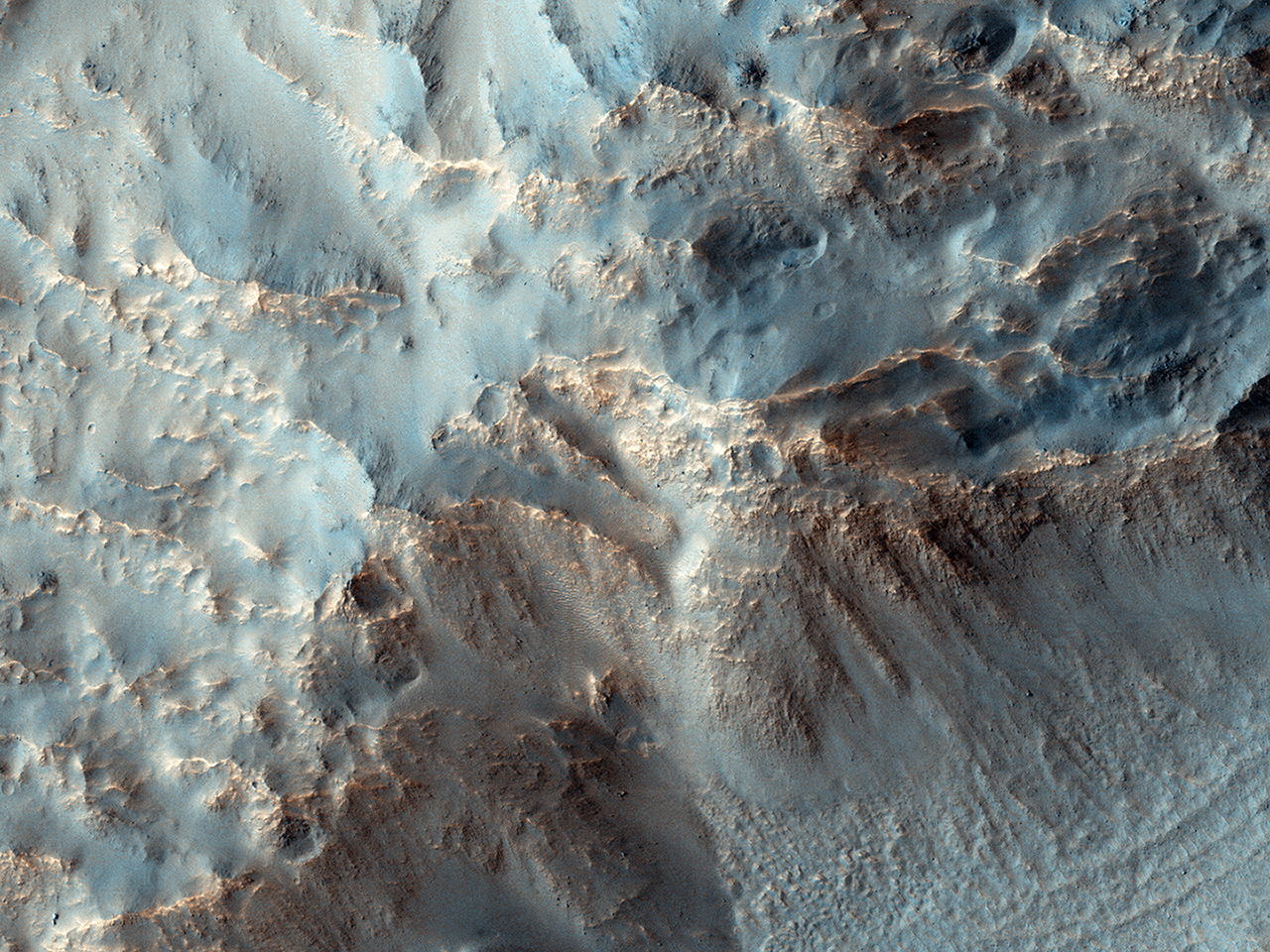
Hale Crater on Mars stretches about 90 miles (150 km) in diameter and lies in the mid-southern latitudes just north of the massive Argyre basin. This high resolution observation might help researchers see if recurring slope lineae (RSL) occur here. Image released Jan. 15, 2015.
Slope Features on Wall in Newton Crater
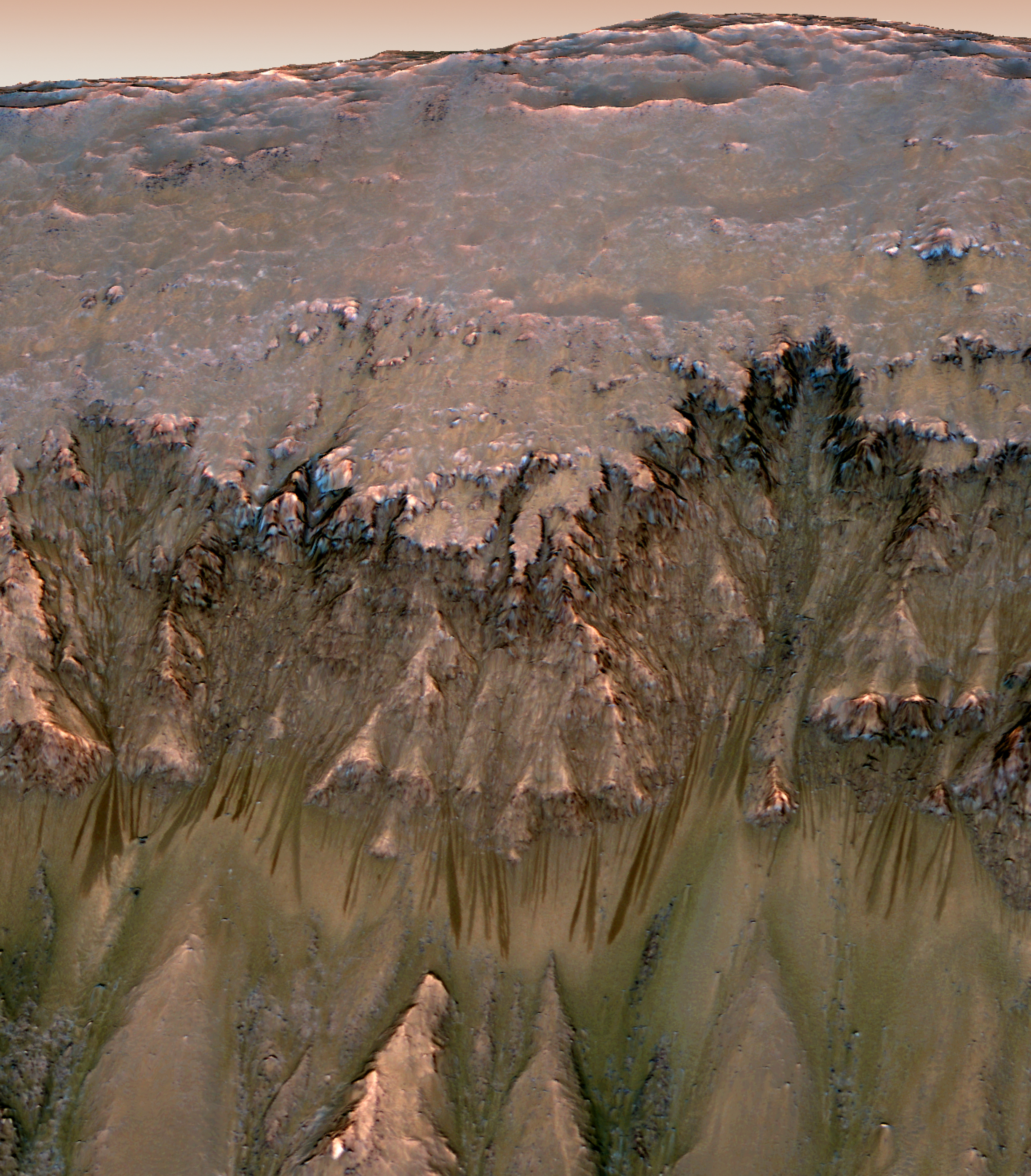
This enhanced-color image has undergone reprojection to show a view of the recurring slope lineae-covered slope as a viewer in a helicopter inside the crater might see. The image also includes a synthetic Mars-like sky. Image released August 4, 2011.
Slope Monitoring in Aram Chaos
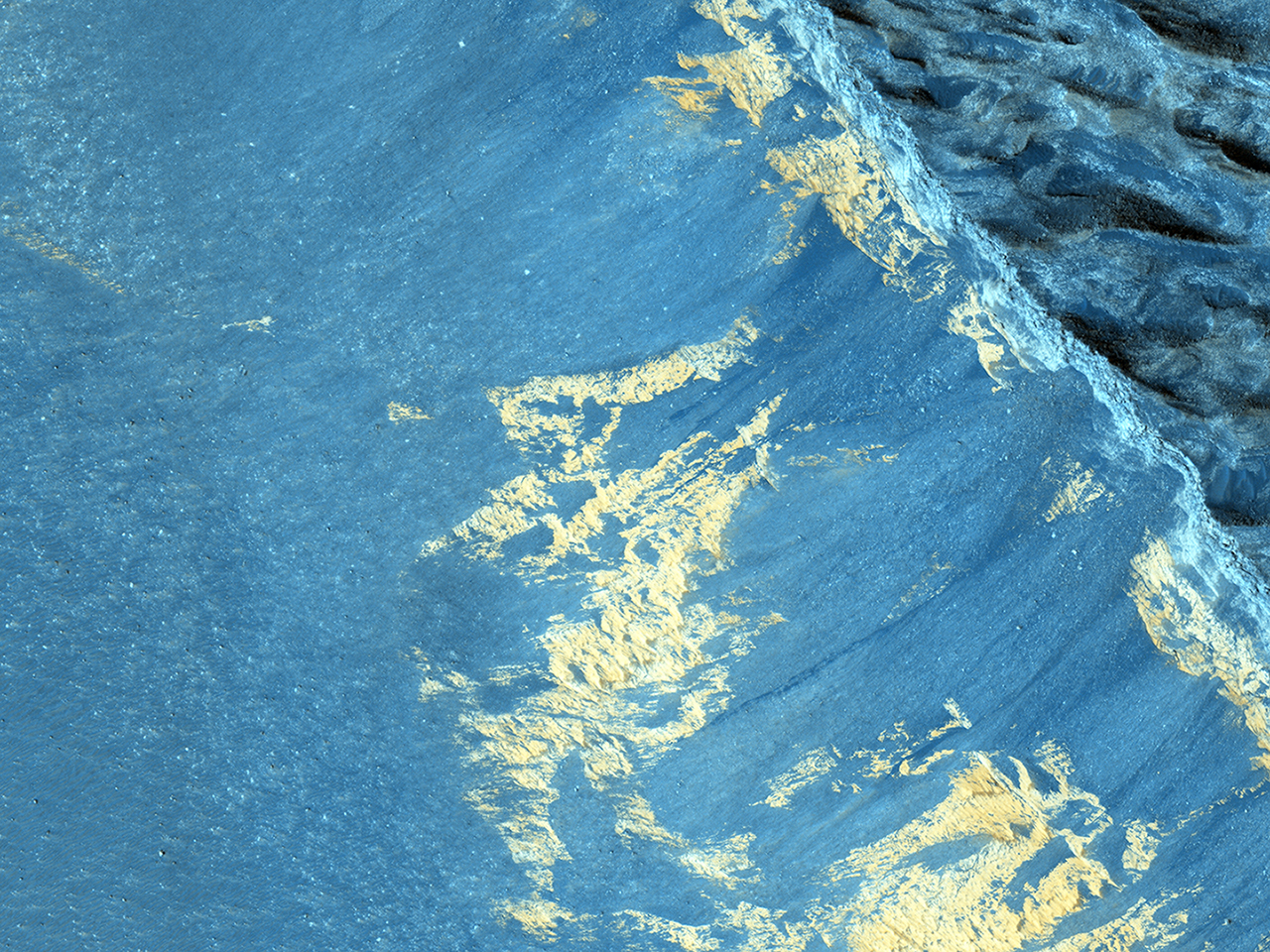
A previous image showed some striking dark downslope flows in Aram Chaos on Mars. Images like this one will help researchers learn if these streaks are recurring slope lineae (RSL). Image released April 22, 2015.
Join our Space Forums to keep talking space on the latest missions, night sky and more! And if you have a news tip, correction or comment, let us know at: community@space.com.

Space.com is the premier source of space exploration, innovation and astronomy news, chronicling (and celebrating) humanity's ongoing expansion across the final frontier. Originally founded in 1999, Space.com is, and always has been, the passion of writers and editors who are space fans and also trained journalists. Our current news team consists of Editor-in-Chief Tariq Malik; Editor Hanneke Weitering, Senior Space Writer Mike Wall; Senior Writer Meghan Bartels; Senior Writer Chelsea Gohd, Senior Writer Tereza Pultarova and Staff Writer Alexander Cox, focusing on e-commerce. Senior Producer Steve Spaleta oversees our space videos, with Diana Whitcroft as our Social Media Editor.
